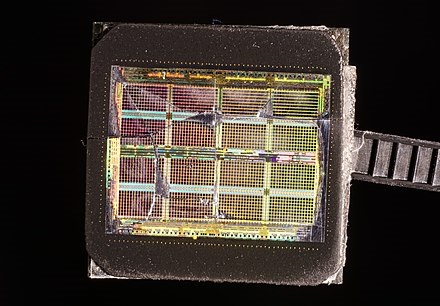From Computers And Laptops To Even Modems And Televisions, They All Have DRAM Memory In Some Way.
But what is DRAM memory, and what is the use and role of Dynamic RAM in digital devices? In the following article, we will introduce the dynamics of RAM and its use in simple language, joining the hardware city.
Meaning of DRAM; What is the purpose of a DRAM chip?
We are all familiar with RAM and know that it is a type of temporary memory with high speed, low latency, and small volume, which is used to store data the processor requires.
All programs and files we use on our phone or computer are in the RAM.
The purpose of loading files in the RAM can be to display a Word file, run the Photoshop program, edit a photo, or display a web page.
DRAM stands for Dynamic Random-Access Memory or DRAM. DRAM is precisely the same electronic chip used for RAM. Therefore, it can be said that DRAM is the chip used for RAM, and the RAM of any device is provided by one or more DRAM chips (ICs).


Since DRAM is a volatile or temporary memory, its information is lost when the power is turned off. When you restart your computer or phone, the operating system and programs must be reloaded onto the RAM, which delays the device’s readiness. It is used for
DRAM memory has high speed and low latency, so it complements the complements and temporarily transfers information to RAM. To better understand the concept of DRAM, look at the image of the RAM module above. On this board, several DRAM memory chips contain cells comprising capacitors and transistors that can temporarily store data.
It might be interesting to know that even mechanical hard drives and SSDs have DRAM memory chips. DRAM memory chips are installed in various devices with the least physical distance from the processor to provide the slightest delay and the fastest access to it. DRAM chips can be non-modular and mounted directly on a television, laptop, or other digital electronic device board.
The DRAM chip or package is installed directly on many mobile phone chipsets’ chipsets (processors). It has advantages such as less space, faster communication, and less delay.
Due to its high speed and low latency, DRAM memory is usually not very large, ranging from several megabytes to several gigabytes. Another reason for the small size of DRAM is the complexity of communication between the processor and DRAM, and it is simply not possible to multiply it. Shared DDR memories (such as DDR5 and DDR4) are DDR SDRAM memory chips.
One of the types of DRAM memory is SDRAM. The difference between SDRAM and DRAM is related to the higher speed and reliability of SDRAM. Therefore it is one of the SDRAM memory chips in manufacturing RAM modules. In short, we can say that in SDRAM memories, to increase reliability and speed, the memory works in sync with the processor or system clock signal and no longer relies on its internal clock.
The application of DRAM memory is not only limited to computer RAM; the video memory of the graphics card is also a type of DRAM. More precisely, GDDR SDRAM is used in graphics cards with a high memory bandwidth and is suitable for graphics processors. GDDR5 and GDDR6 memory chips are among the DRAM memories used in today’s graphics cards.
Now that we have covered the concept of DRAM, we will now address a fundamental question. As mentioned in this article, DRAM is not different from RAM, and RAM is just a general name for DRAM memories. DRAM is straightforward and used by all processors to access and store data.
Why does the processor need DRAM memory?
The processor or CPU uses small but high-speed memories called registers. The processor enters all data into the registers for processing or operation. For example, adding two numbers or changing a pixel of a photo is done in the register memory. The problem is that the speed of the processor registers is very high, and at the same time, it has a tiny size. Therefore, cache memory and RAM are needed.
RAM is a slower memory than cache memory. Still, with a volume thousands of times larger than all the computer’s information passes through, it does not matter whether you open a Word file or enter a website.
Summary and answers to frequently asked questions
Dynamic RAM is an essential type of memory in almost all digital devices today, and all of them require DRAM memory for the processor to work. In the processor of a device such as a washing machine, Dynamic RAM can be minimal and built into the controller itself. Still, the processor of devices such as mobile phones, laptops, game consoles, televisions, and the like needs a separate DRAM memory chip.
The use of DRAM is to serve the processor in doing all the tasks done by the CPU, and without RAM, a computer or digital device does not work. A DRAM memory can be in the form of modules and can be replaced or upgraded, but in many cases, it is soldered to the device’s PCB board and cannot be removed.
What is DRAM memory used for?
DRAM memory is necessary for the operation of almost all processors. Microcontrollers have internal DRAM memory.
What does DRAM memory do?
DRAM itself does not store information permanently and has no executive function, But it is necessary to process information and work computer systems, mobile phones, and the like.